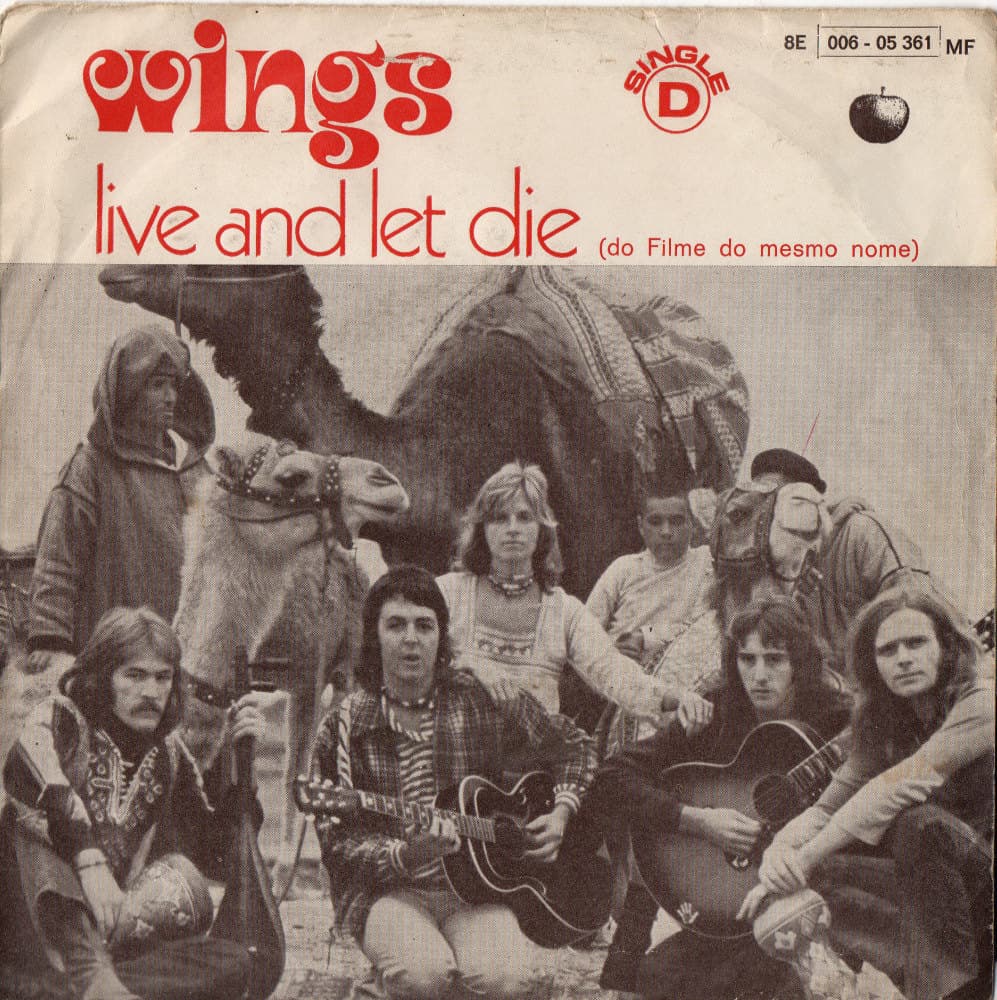
“Live and Let Die” by Paul McCartney & Wings: A Bond Theme That Transcends Time
In 1973, Paul McCartney & Wings released “Live and Let Die,” the iconic theme song for the James Bond film of the same name. This track marked a significant reunion between McCartney and producer George Martin, who had been instrumental in shaping The Beatles’ sound. The collaboration resulted in a song that not only complemented the film’s dynamic energy but also stood out as a monumental piece in McCartney’s post-Beatles career.
Upon its release, “Live and Let Die” achieved remarkable chart success. In the United States, it climbed to No. 2 on the Billboard Hot 100, showcasing its widespread appeal. In the United Kingdom, the track reached No. 9 on the UK Singles Chart, further solidifying its status as a transatlantic hit. The song’s fusion of rock and orchestral elements set a new standard for Bond themes, making it the first rock song to open a Bond film. Its innovative sound and compelling composition earned it a nomination for the Academy Award for Best Original Song, highlighting its critical acclaim alongside commercial success.
The inception of “Live and Let Die” is a testament to McCartney’s songwriting prowess and adaptability. Film producers Harry Saltzman and Albert R. Broccoli approached McCartney to craft the theme song even before the screenplay was finalized. This early involvement allowed McCartney to infuse the song with the film’s essence, capturing its adventurous spirit and underlying tension. The recording sessions took place in October 1972 at AIR Studios in London, during the production of Wings’ album “Red Rose Speedway.” The collaboration with George Martin, who provided the orchestral arrangement, seamlessly blended McCartney’s rock sensibilities with cinematic grandeur, resulting in a track that resonated with both film audiences and music enthusiasts.
Lyrically, “Live and Let Die” explores themes of change, resilience, and the complexities of life. The song reflects on the inevitability of confronting challenges and the necessity of adapting to new circumstances. The phrase “live and let die” serves as a counterpoint to the more passive “live and let live,” suggesting a proactive stance in the face of adversity. This thematic depth adds layers to the song, allowing listeners to connect with its message on a personal level.
Over the years, “Live and Let Die” has maintained its prominence in popular culture. It remains a staple in McCartney’s live performances, often accompanied by elaborate pyrotechnics that enhance its dramatic flair. The song has also been covered by various artists, most notably by Guns N’ Roses in 1991, whose rendition introduced the classic to a new generation and earned them a Grammy nomination for Best Hard Rock Performance. This enduring relevance underscores the song’s versatility and its ability to resonate across different musical landscapes.
For many, “Live and Let Die” evokes a sense of nostalgia, transporting listeners back to the early ’70s—a time when music and cinema were undergoing transformative shifts. The song encapsulates the era’s experimental spirit, blending genres and pushing creative boundaries. Its association with the James Bond franchise adds a layer of cinematic history, reminding audiences of the film’s action-packed sequences and the suave sophistication of the Bond character.
In retrospect, “Live and Let Die” stands as a testament to Paul McCartney’s artistic evolution and his ability to craft music that transcends its original context. The song’s fusion of rock energy, orchestral sophistication, and lyrical depth continues to captivate listeners, making it a timeless piece that bridges the gap between music and film.